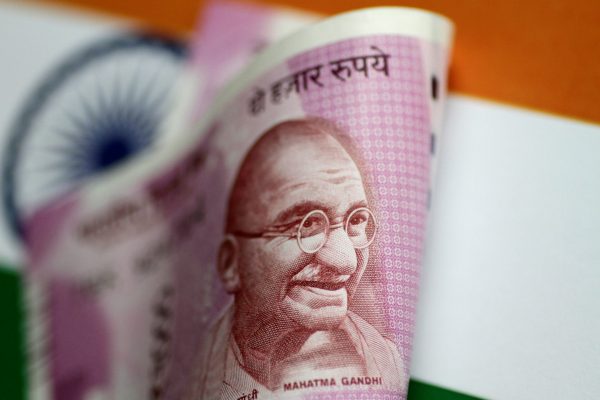Using 2004–05 as a base year, both real and nominal exchange rates show an appreciation of the rupee since May 2016. And according to a weighted real exchange rate against India’s major trading partners, the rupee has been above its 2004–05 value for multiple consecutive years. These trends indicate that the rupee is overvalued.
In contrast, most major exporters such as China, Japan, the United Kingdom, South Korea, Brazil and the Philippines have actually experienced a fall in real exchange rates since 2013. India is the only country that has had a consistent increase in its exchange rate over the past few years. For example, the rupee’s real exchange rate against the renminbi, the Philippine peso and the US dollar fell from 124.4 to 119, 113.3 to 107 and 114.5 to 112 respectively from 2016–2017.
India’s tight monetary policy — along with a positive outlook for the Indian economy — has resulted in huge capital inflows (mostly short term), which have played a major role in strengthening the rupee. The Reserve Bank of India’s (RBI’s) lack of intervention and the government’s indirect support for a strong currency has created expectations around rupee appreciation that encourage capital inflows — particularly into the equity market where any appreciation of the rupee would also result in higher returns on investment.
But since the real exchange rate has consistently been higher than its base year levels and is rising, India has a case of exchange rate misalignment. This is affecting India’s exports and has the potential to create economic volatility. One of the lessons from the Asian financial crisis is that persistent overvaluation of a currency leads to crisis. By contrast, a well-managed and undervalued currency regime with appropriate reforms could be hugely beneficial — as China has demonstrated.
In the present context, real exchange rate appreciation would not be good for Indian industry. It would lead to reduced competitiveness in exports and tradable sectors, especially since industries are currently suffering from overcapacity. But India’s high fiscal deficit and high debt-to-GDP ratio gives the RBI little space to intervene in the foreign exchange market, as letting the rupee depreciate could lead to higher inflation. Hence the RBI’s reticence: inflation remains a politically sensitive subject in India, and the RBI has been using exchange rate mechanisms to achieve its inflation target.
The strengthening rupee is hurting exporters in both competitiveness and earnings. There are many labour-intensive and export-dependent industries and the supply chain of export industries involves millions of small and medium-sized enterprises (SMEs). A rising rupee is therefore not good for employment.
A high rupee also hurts the services sector — particularly for those whose export earnings are foreign-currency dominated. Software exports are experiencing lower profit margins, and intense competition in the world market does not allow them to raise prices. Indeed, corporate earnings of many US dollar-denominated industries are experiencing low market earnings.
The rising rupee is not all bad. It has helped contain inflation through cheap imports and has also helped companies with foreign currency-denominated debt. But the strategy may not be right to sustain growth in the long run. In the medium to long term, cheap imports will affect domestic production and jobs, particularly in manufacturing. Moreover, India’s consumer price index inflation is based more on a non-tradable basket and is influenced more by supply-side bottlenecks. Hence, allowing the rupee to depreciate may not particularly affect inflation provided that the economy pursues structural reforms across sectors to improve productivity-led growth.
It is time to correct the misalignment in India’s exchange rates and to allow the rupee to move towards its true value. The overvalued rupee is hurting Indian exports, investment and large numbers of export-based SMEs. Further, India’s overvalued currency is susceptible to volatility and any rise in the US interest rate could lead to a run on the rupee. At the end of the day, the Indian economy needs to be efficient, expanding and creating jobs — an over-valued rupee undermines these goals.
Pravakar Sahoo is a Professor at the Institute of Economic Growth, Delhi University.
An earlier and longer version of this article was first published in Business Standard.

